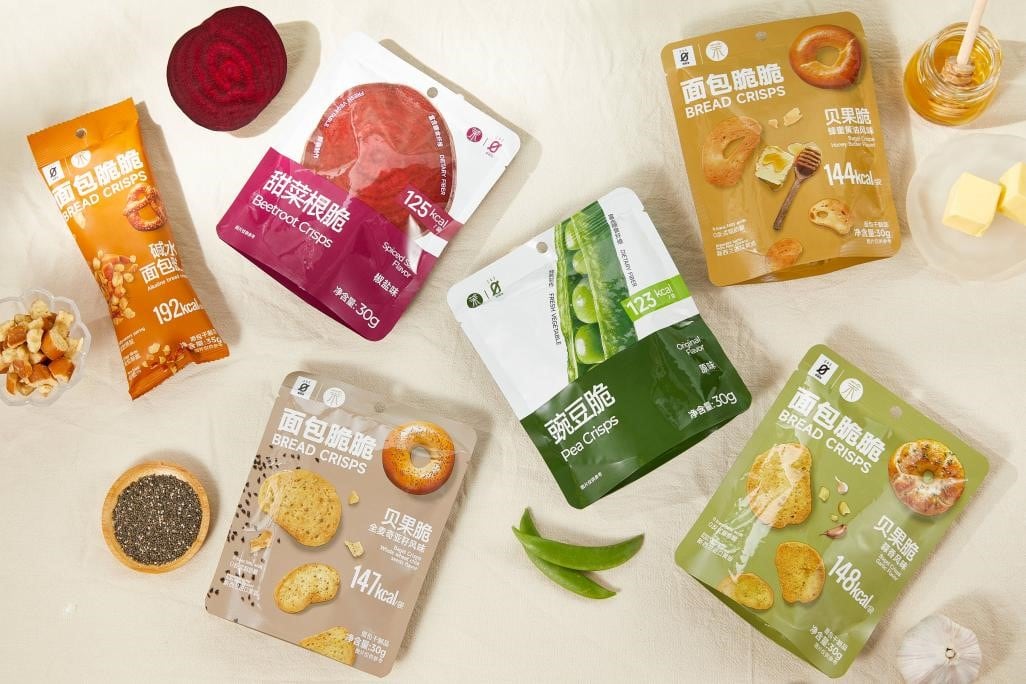Asian snack brand Mamame Whole Foods shares its approach to tapping into key snacking occasions.
Co-founder and CEO Liz Kang says Mamame built its product line by responding to emerging consumer needs – not by reinventing the wheel, but by adapting existing traditions to modern lifestyles.
Strategy 1: Redefining snacking for performance and wellness
Snacking occasions
1) Achieving focus and productivity
2) Fitness snacking: energy, protein and no-crash
Today’s consumers are snacking with purpose — whether to stay sharp during work hours or recover from a workout. Mamame’s approach taps into this performance-focused mindset, offering snacks that support productivity, focus, and fitness without the crash. These moments are no longer defined by convenience alone, but by their ability to deliver clean energy and measurable wellness benefits.
Strategy 2: Creating new snacking occasions with purpose
Snacking occasions
3) At-home entertainment: affordable indulgence for relaxing at home
4) Travel / on-the-go: convenient, TSA-approved, better-for-you.
Mamame positions its tempeh chips as a multifunctional snack – suitable for post-workout recovery, midday fuel, school and office pantries or on-the-go mindful snacking.
Available in 50g and 100g packs, it offers portion control and portability, making it suitable for both health-conscious consumers and everyday snackers.
Strategy 3: Real food made snackable
Snacking occasions
5) Fuelling up for work: Regardless of work arrangements – hybrid or remote, snacks sometimes replace meals in flexible settings
6) Parenting: allergen-safe, clean snacks for kids & families
Mamame makes nutrient-dense, traditional foods like tempeh more accessible by presenting them in familiar formats – such as chips – while maintaining nutritional integrity.
“We emphasise clean, premium ingredients and thoughtful packaging. Across all markets, product sampling is essential,” said Kang.
She added that crunch serves as the sensory bridge in plant-based snacking – delivering satisfaction without compromising on health or quality.
“Our crunchy chips offer a familiar, approachable format that lowers the barrier to trial, making ‘new food’ more accessible to global consumers unfamiliar with traditional formats.”
Strategy 4: Protein-forward, planet-friendly, and purpose-driven
Snacking occasion
7) Functional consumption: wellness rituals and self-care through intentional snacking
Mamame uses non-GMO black-eyed peas – a sustainable source of plant protein. It is a female-founded, Asia-born brand that brings traditional foods into modern snacking culture.
The brand appeals to consumers who seek more from their snacks – nutrition, cultural relevance, and conscious sourcing.
What is tempeh?
Tempeh is a traditional Indonesian food made from fermented soybeans, typically formed into a firm, cake-like patty. Known for its high protein content and natural fermentation process, it is widely used as a plant-based protein source in vegetarian and vegan diets. Mamame also uses other legumes, such as black-eyed peas, to create its tempeh, highlighting the ingredient’s versatility across different product formats.
Founder insights: Building a category from the ground up
Mamame built a snack category with tempeh, a traditional Indonesian food that is not a mainstream snack.
“It’s about building a category. That means educating, sampling, and trust-building. From influencer trials to in-store demos, we’re doing the hard work to create demand from scratch.
“We influence through storytelling – combining founder narratives with science-backed nutrition education. That’s helped us demystify tempeh,” said Kang.
Notably, creating a snack category requires paying attention to what consumers are seeking.
“Creating a category starts with listening – not just to retailers and buyers, but to customers themselves. Today’s consumers are far more informed than we expected.
“For example, when we first launched in Korea two years ago, we listed the product across various e-commerce and offline channels. The response snowballed without any paid marketing, and I believe that’s due to how easily modern consumers can search for information. All it takes is pulling out a phone and Googling ‘What is tempeh?’ and they can immediately see all the nutritional benefits.
Challenges of entering new markets
Kang acknowledged that there are challenges entering new markets.
In regions such as the US and Europe, there’s a strong preference for products that are gluten-free, non-GMO, vegan, and high in protein – which our products meet. However, there’s also some hesitation toward unfamiliar foods.
“In Southeast Asia, markets like Singapore are challenging for different reasons. People are familiar with tempeh but often associate it with a lower-end product. In contrast, our version uses black-eyed peas, is cooked in coconut oil, and is priced at a premium because of the quality of ingredients we use.
“All of these challenges come back to one question: how can we better position tempeh and educate people on its benefits across different product formats?”
Reflecting on the brand’s unexpected global reach, Liz Kang noted that Mamame’s tempeh chips are now sold in mainstream supermarkets in countries like Lithuania and Latvia – places she had not imagined entering. She attributed this success to a thoughtful balance of storytelling and consumer education.
“We include some educational content right on the packaging. In fact, some of our packs feature six different languages. We talk not only about our brand and mission but also about the roots and background of tempeh in the local language.
“We even include a simple diagram showing how it’s made. What’s really interesting is that in most of these markets, tempeh isn’t something people are already familiar with. But awareness and interest have grown steadily. I believe we’ve created a strong footprint in these markets,” shared Kang.





